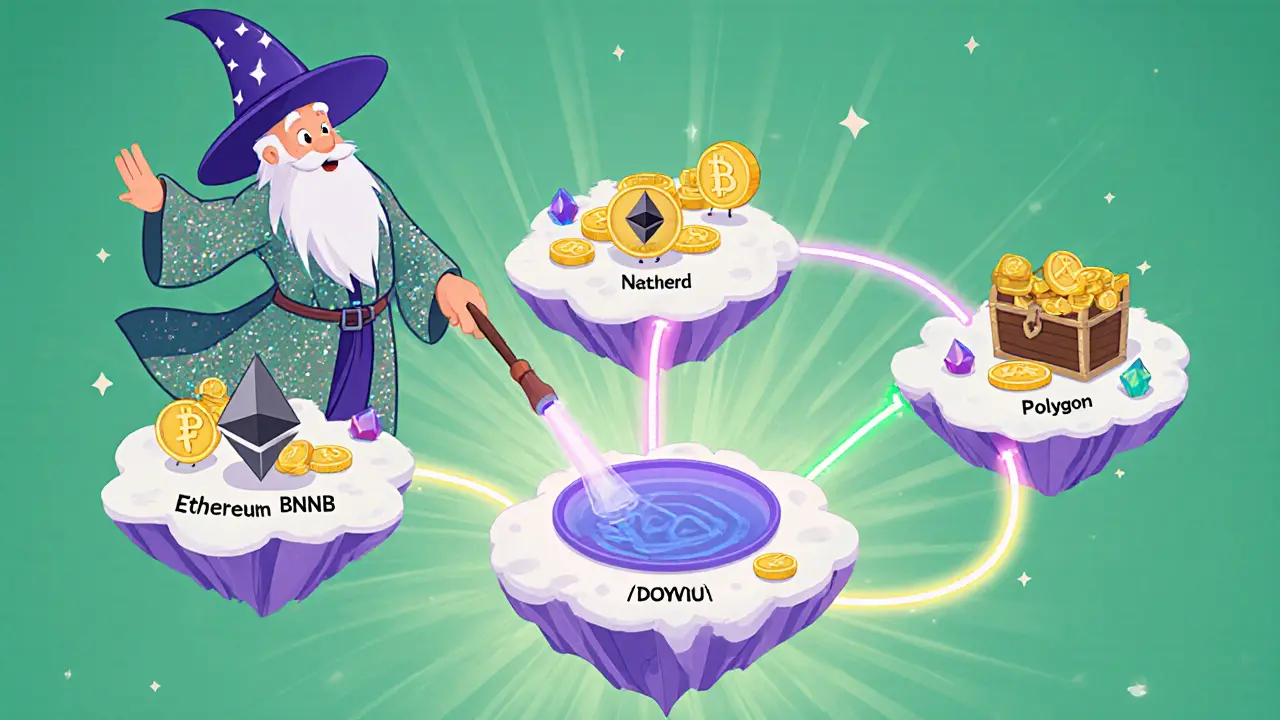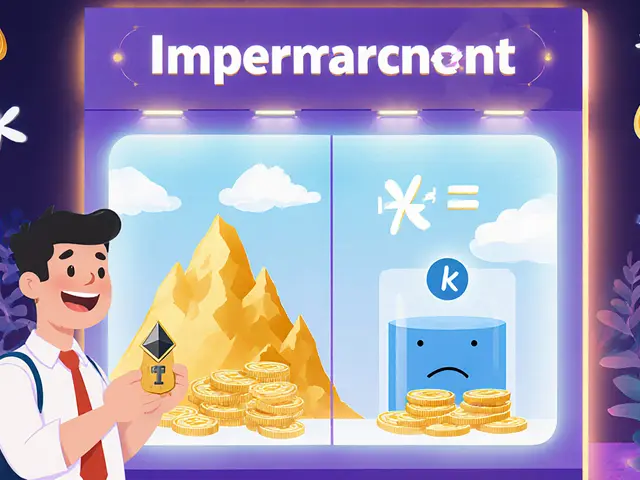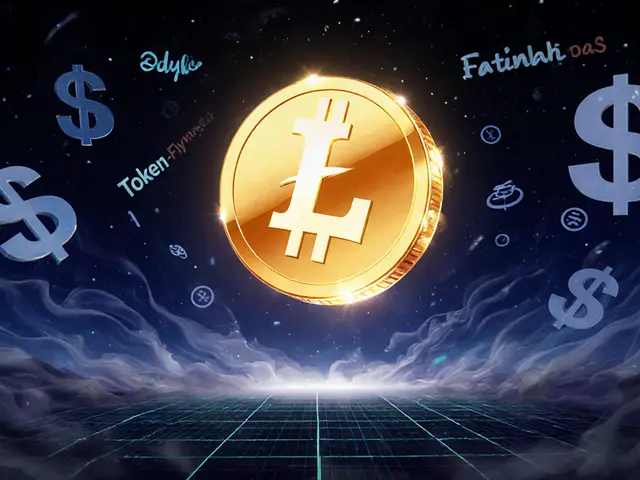DODO vs Uniswap vs SushiSwap Comparison Calculator
| Feature | DODO | Uniswap V3 | SushiSwap |
|---|---|---|---|
| Pricing Model | Proactive Market Maker (PMM) | Automated Market Maker (AMM) with concentrated liquidity | Automated Market Maker (AMM) V2 |
| Estimated Slippage | ~0.1% | ~0.3% | ~0.4% |
| Impermanent Loss for LPs | Minimized by PMM design | Standard AMM exposure | Standard AMM exposure |
| Liquidity Provision | Single-token or dual-token pools | Dual-token pools (concentrated range) | Dual-token pools |
| Fee Structure | 0.25% (Ethereum) – rebates for DODO holders | 0.05% – 0.30% (tiered) | 0.25% (standard) |
| Gas Efficiency | High (especially on BSC/Polygon) | Moderate | Moderate |
Recommendation:
Based on your selected parameters, DODO offers the lowest slippage and better liquidity provision options. For maximum savings, consider trading on BSC or Polygon where gas fees are significantly lower.
Looking for a DEX that can cut slippage and keep your liquidity safe? DODO exchange review takes a close look at the Ethereum‑based platform that claims to out‑perform Uniswap and SushiSwap with its proprietary Proactive Market Maker (PMM) engine. In this guide you’ll discover how DODO works, what it costs, which tokens you can earn, and whether the platform lives up to its hype in 2025.
What Is DODO? - A Quick Definition
When people talk about DODO is a decentralized exchange (DEX) built originally on the Ethereum blockchain. The protocol is community‑owned, runs entirely on‑chain, and has expanded to Binance Smart Chain, Polygon, and several other networks.
How DODO Works - The PMM Algorithm
The heart of DODO is its Proactive Market Maker (PMM) algorithm, which differs from the classic Automated Market Maker (AMM) model used by most DEXs. PMM pulls price data from oracles, then dynamically adjusts the pool’s virtual depth to mimic a centralized order book. The result is lower price impact for traders and reduced impermanent loss for liquidity providers.
Key Features That Set DODO Apart
- SmartTrade aggregates liquidity from DODO’s own pools and external sources, routing swaps through the cheapest path available.
- Single‑token liquidity lets you deposit just the base or quote asset instead of a 50/50 pair, lowering the capital you need to become a provider.
- Multi‑chain support means the same interface works on Binance Smart Chain, Polygon, and other EVM‑compatible networks.
- Crowdpooling launches new tokens with on‑chain price discovery, giving long‑tail assets a liquid market from day one.

Trading on DODO - Step‑by‑Step Guide
- Connect your wallet (MetaMask, Trust Wallet, or any Web3‑compatible wallet) to the DODO interface.
- Select the network you want to trade on - Ethereum for highest liquidity, BNB Chain for cheaper gas, or Polygon for fast finality.
- Choose your token pair. If a direct pool doesn’t exist, SmartTrade will route the trade through the best combination of pools.
- Enter the amount you wish to swap. DODO shows the estimated slippage and the fee breakdown in real time.
- Confirm the transaction in your wallet. Once the block is mined, you’ll see the new token balance instantly.
Fees, Rebates & DODO Token Utilities
The platform charges a base swap fee of 0.25% on Ethereum, with lower rates on BNB Chain (0.20%) and Polygon (0.15%). Holding the native DODO token can unlock fee rebates up to 50% and grant voting rights on governance proposals. DODO token holders also earn a share of the protocol’s trading fees and can stake for additional vDODO rewards.
Pros and Cons for Traders and Liquidity Providers
- Pros
- Lower slippage thanks to PMM pricing.
- Single‑token liquidity reduces capital barriers.
- SmartTrade finds the best price across multiple pools.
- Fee rebates for DODO token holders improve cost efficiency.
- Cons
- Ethereum gas fees remain high during network congestion.
- Liquidity depth can vary across chains; smaller pools may still experience price swings.
- Complexity of PMM vs AMM may confuse beginners.

DODO vs Major Ethereum DEXs
| Feature | DODO | Uniswap V3 | SushiSwap |
|---|---|---|---|
| Pricing Model | Proactive Market Maker (PMM) | Automated Market Maker (AMM) with concentrated liquidity | AMM V2 |
| Typical Slippage (10k USD trade) | ~0.1% | ~0.3% | ~0.4% |
| Impermanent Loss for LPs | Minimized by PMM design | Standard AMM exposure | Standard AMM exposure |
| Liquidity Provision | Single‑token or dual‑token pools | Dual‑token pools (concentrated range) | Dual‑token pools |
| Fee Structure | 0.25% (Ethereum) - rebates for DODO holders | 0.05% - 0.30% (tiered) | 0.25% (standard) |
| Governance Token | DODO | UNI | SUSHI |
Security, Audits & Regulatory Outlook
DODO’s smart contracts have been audited by reputable firms such as CertiK and PeckShield. No major exploits have been reported as of October2025. The protocol operates without a formal regulatory charter, which keeps it fully decentralized but also means users must perform their own due‑diligence. Recent analysis from FxVerify confirms the platform has no known jurisdiction‑specific licensing requirements.
Is DODO Worth Using in 2025?
If you prioritize lower slippage and want to provide liquidity without locking both sides of a pair, DODO offers tangible advantages over classic AMM DEXs. Traders on Ethereum will still pay high gas fees, but the fee rebates for DODO token holders can offset a portion of that cost. For LPs, the single‑token option and reduced impermanent loss make DODO a compelling addition to a diversified DeFi portfolio.
Frequently Asked Questions
What is the difference between PMM and AMM?
PMM (Proactive Market Maker) uses oracle‑derived price data to adjust pool depth ahead of trades, reducing slippage and impermanent loss. AMM (Automated Market Maker) relies on a fixed mathematical curve, which can cause higher price impact and greater loss for liquidity providers when markets move.
Do I need to hold DODO tokens to trade on the platform?
No. Anyone can trade without holding DODO. However, owning the token gives you fee rebates, voting power, and access to liquidity mining programs.
Can I provide liquidity with only one token?
Yes. DODO’s single‑token liquidity pools let you deposit just the base or just the quote asset, unlike traditional AMMs that require a 50/50 split.
Is DODO safe to use on Ethereum during high network congestion?
The smart contracts have passed multiple audits, but high gas prices can still affect transaction costs. Consider using DODO on BNB Chain or Polygon for cheaper execution when Ethereum fees spike.
What is Crowdpooling and how does it benefit token launchers?
Crowdpooling is DODO’s on‑chain token issuance service. It creates a liquid pool at launch, allowing early investors to trade at a price set by market demand, which can reduce price volatility for new projects.






EDWARD SAKTI PUTRA
Seeing the lower slippage on DODO really makes a difference when you’re trading larger amounts, especially on Ethereum where every basis point counts. The PMM model seems to smooth out price impact nicely, and that helps keep your execution closer to the expected price. I also appreciate the single‑token liquidity pools because they lower the barrier for new LPs. It’s good to see that the platform is trying to be more inclusive for smaller participants.
Ritu Srivastava
When you look at the fee structure, DODO’s 0.25% on Ethereum feels excessive compared to Uniswap’s tiered fees, and the rebates for token holders are a weak justification. The ecosystem should be pushing for lower costs, not just rewarding insiders. Users deserve fair pricing that reflects the true value of the service, not a hidden profit scheme.
Liam Wells
It is noteworthy; the Proactive Market Maker (PMM) architecture purportedly reduces impermanent loss-yet empirical data remain scarce; consequently, investors must remain vigilant; the comparative tables illustrate differing liquidity models, yet the underlying assumptions warrant scrutiny; moreover, gas efficiency claims on BSC and Polygon, while appealing, may not translate universally; thus, a comprehensive risk assessment is indispensable.
Marcus Henderson
From a philosophical standpoint, the reduction in slippage aligns with the broader goal of efficient markets, and DODO’s approach appears to advance that ideal. By offering both single‑token and dual‑token pools, the platform invites a more diverse set of liquidity providers, which could enhance overall market depth. It’s a promising direction for decentralized finance.
Andrew Lin
DODO's PMM model simply beats the AMM crowd.
Matthew Laird
While the numbers look good on paper, we must remember that trading on a platform that rewards its own token holders can create a conflict of interest. The community should demand transparent governance and ensure that fee rebates don’t become a backdoor for preferential treatment.
Ken Pritchard
For anyone considering DODO, start by testing small trades to gauge the real‑world slippage. Keep an eye on gas costs on your chosen network, and remember that liquidity depth can change quickly, so regular monitoring is key.
Brian Lisk
Building on that advice, it’s also valuable to compare the fee rebate schedule with your anticipated trading volume. If you hold DODO tokens, the rebates might offset the higher base fee, but only if you trade frequently enough to benefit from the discount. Additionally, consider the impact of network congestion; during peak times, even a modest fee can become costly when combined with elevated gas prices. For a holistic view, examine both the historical price impact data and the current liquidity pool sizes across the supported chains. This thorough approach helps you avoid surprises and makes your strategy more resilient. Lastly, don’t forget to review the platform’s security audits, as smart‑contract vulnerabilities could undermine any fee advantage you might gain.
Richard Bocchinfuso
Honestly, the whole DODO hype feels a bit overblown to me; the fee is higher than Uni, and the rebate thing is just a gimmick.
Dawn van der Helm
Love the low slippage! 🚀 If you’re on BSC, you’ll also save tons on gas. 🎉
Michael Phillips
I tend to keep my trades small to stay under the radar and avoid any unexpected price moves.
Franceska Willis
Did you notice how DODO’s PMM model tries to outsmart the typical AMM trickery? It sounds clever, but the real test is whether it actually delivers lower impermanent loss in volatile markets. If it does, that could be a game‑changer for passive LPs.
Jack Stiles
Looks solid for a casual trader, simple interface and decent gas fees on Polygon.
Darren Belisle
Indeed, simplicity can be a double‑edged sword; while it lowers the entry barrier, it may also obscure the nuanced risks associated with PMM pools-especially for newcomers.
Maintaining vigilance is essential.
Heather Zappella
According to recent on‑chain analytics, DODO’s average trade size on Ethereum is roughly $12,000, and the slippage reported aligns with the 0.1% figure in the table. This suggests the simulation reflects real‑world performance fairly well.
Jason Wuchenich
When you’re just starting out, it helps to keep a journal of each trade’s gas cost and slippage. Over time, patterns emerge that can guide you toward the most cost‑effective networks.
Caitlin Eliason
This platform feels like the future of decentralized swaps-so exciting! 😍 The lower slippage really lets you capture more profit on each trade. 🎯
Bryan Alexander
Optimism is great, but we should keep a healthy dose of skepticism. The rebate system could become a revenue stream for insiders if not properly regulated.
Patrick Gullion
Honestly, I think the whole “lowest slippage” claim is a marketing spin; you’ll still see variance depending on pool depth.
Caleb Shepherd
Don’t forget that many of these platforms are subtly influenced by large whale activity. The visible fees might mask hidden costs from price manipulation.
Melanie LeBlanc
For those exploring DODO, consider diversifying across the supported chains. Switching to Polygon or BSC can drastically cut gas fees, and the overall experience improves when you compare the transaction speeds.
Don Price
The claim that DODO’s Proactive Market Maker eliminates impermanent loss is alluring, but let us examine the underlying mechanics. First, the PMM algorithm adjusts prices based on external market data, which presupposes accurate and timely price feeds; any lag or manipulation could introduce distortion. Second, while the model aims to reduce exposure, liquidity providers remain vulnerable during rapid, asymmetric market moves, especially in low‑volume pools. Third, the fee rebate structure incentivizes token holding, potentially creating a feedback loop where rewards favor insiders over ordinary LPs. Fourth, the comparative tables overlook the cost of cross‑chain bridging, which can erode the apparent savings on BSC or Polygon. Fifth, the assumption that lower slippage always translates to better outcomes ignores the fact that aggressive traders may still suffer from hidden costs like hidden spreads. Sixth, the platform’s governance model, though decentralized in name, often centralizes decision‑making among a few core developers, raising concerns about future fee changes. Seventh, security audits are a necessary but insufficient safeguard; even audited contracts have historically been compromised via upgrade mechanisms. Eighth, the reliance on single‑token pools, while simplifying entry, can concentrate risk if the underlying asset experiences extreme volatility. Ninth, user education appears lacking; novices might misinterpret rebate eligibility, leading to unexpected fee structures. Tenth, market competition is fierce, and other DEXes are rapidly adopting hybrid models that may surpass DODO’s performance. Eleventh, the liquidity mining incentives could artificially inflate pool depth, skewing the slippage metrics in the short term. Twelfth, the platform’s roadmap includes features that could introduce additional complexity, potentially affecting usability. Thirteenth, regulatory scrutiny around token rebates may evolve, imposing new compliance costs. Fourteenth, the data presented in the review stem from proprietary simulations, not transparent on‑chain analysis. Finally, investors should adopt a holistic perspective, balancing fee structures, security, governance, and long‑term sustainability before committing capital.
Mark Fewster
That’s a thorough breakdown; it really highlights how many variables we need to keep in mind when assessing a DEX. Staying informed is key.
Monafo Janssen
Overall, the platform offers a fresh take on liquidity provision, but it’s wise to test it out with modest amounts first. Keep an eye on updates, as the ecosystem evolves quickly.
Jason Duke
While the optimism is appreciated, it’s essential to scrutinize the fee model-0.25% on Ethereum may deter cost‑sensitive traders; however, the rebate system could offset that for DODO token holders, provided the token maintains value.
Proceed with caution and data‑driven decisions.